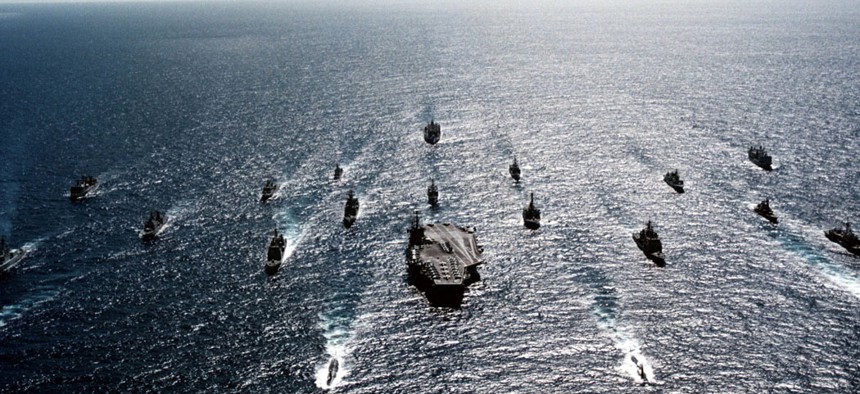Navy awards deal for installation of new EW tools
Three small businesses will share in a $49 million contract to install systems on a variety of ships, including a few foreign vessels.
The Navy, continuing to build up its electronic warfare arsenal, has awarded $49 million worth of contracts to three small businesses to install surface electronic warfare systems on multiple ship hulls while removing some existing systems.
The work under the contract will include ship and ordnance alterations, industrial services such as platform prefabrication/fabrication, system/equipment, shipboard installations, material support, and quality assurance inspection. The majority of the work, 87.8 percent, will be performed on Navy ships, although the contract also calls for work un the Foreign Military Sales program on ships for Saudi Arabia (4.8 percent), Taiwan (5.3 percent) and the Philippines (2.1 percent), according to a contract announcement from the Defense Department.
The companies on the small business set-aside contract are Prism Maritime, Stimulus Engineering Services and Superior Marine Solutions. Work will be performed pier side at U.S. maritime facilities in the United States and abroad, as well as at public or private facilities when U.S. facilities are not available. Work is expected to be completed by September 2020.
The Navy and the other military services have stressed the importance of electronic warfare, particularly since the drawdown in Iraq and Afghanistan took them away from the relatively uncontested airwaves in those countries.
The services have released a series of solicitations in search of EW tools. Two examples: the Navy looking for ways to assess the susceptibility of ships and other maritime assets to EW attack, and the Air Force asking industry for input on research into innovative concepts for using high-power electromagnetic technology to complement and enhance cyber and electronic warfare concepts.
In another example of the push for EW tools, the Navy awarded Lockheed Martin a $154.9 million modification for low-rate initial production Surface Electronic Warfare Improvement Program, or SEWIP, Block 2 systems. The Navy also has put a lot into development of the Next Generation Jammer, intended to protect against EW threats. And the Army earlier this month awarded a $248.8 million contract to 16 small businesses for EW tools and sensors.
In addition to considering declaring the electromagnetic spectrum the sixth domain of warfare, military officials also have pointed out that just about every operation, whether land, sea, air, space on cyberspace, depends on the spectrum for communications, situational awareness and other aspects of operations.




